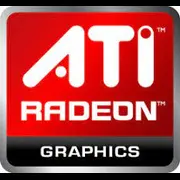ATI FirePro V8700

ATI FirePro V8700: A Professional Tool in the World of GPUs
April 2025
Introduction
The ATI FirePro V8700 graphics card, released in 2009, remains a legend among professional graphics solutions. Despite its age, it is still used in niche tasks where stability and accuracy are paramount. However, in 2025, its capabilities should be assessed through the lens of modern requirements. In this article, we will explore what makes the V8700 interesting today, how it handles tasks, and who might still find it useful.
1. Architecture and Key Features
TeraScale 2 Architecture
The FirePro V8700 is built on the TeraScale 2 architecture (RV770), which provided a breakthrough in parallel computing at its time. The manufacturing process is 55 nm, which seems archaic by today's standards (compare this to the 5 nm used in RDNA 4).
Professional Optimization
This card is designed for CAD applications and 3D rendering. It supports 10-bit color, ECC memory for error protection, and interfaces like DisplayPort 1.1.
Lack of Modern Gaming Technologies
No RTX, DLSS, or FidelityFX here — these features emerged a decade later. Ray tracing and AI upscaling are not available due to hardware limitations.
2. Memory: Reliability vs. Speed
GDDR5: Modest Capacities
The memory capacity is 1 GB GDDR5 with a 256-bit bus. The bandwidth is 108.8 GB/s. While this is insufficient for modern 3D scenes or 4K textures, it suffices for older CAD projects.
ECC Memory
Error correction is critical in scientific calculations, but it increases latency. In gaming, ECC is useless, which is why the FirePro lags behind its gaming counterparts in speed.
3. Gaming Performance: Nostalgia in Frames
Average FPS in Older Projects
In games from 2008-2012 (e.g., Crysis, Skyrim), the V8700 achieves 30-45 FPS at 1080p (low settings). In modern AAA titles (e.g., Cyberpunk 2077), the card is unplayable — yielding less than 10 FPS even at 720p.
Resolutions
- 1080p: Only suitable for light projects like CS:GO (up to 60 FPS on low settings).
- 1440p/4K: Not recommended due to lack of memory and computing power.
Ray Tracing
There is no hardware support. Software implementations (e.g., in Blender) run extremely slowly.
4. Professional Tasks: Where the V8700 is Still Relevant
3D Modeling and Rendering
In Autodesk Maya or SolidWorks, the card demonstrates stability thanks to optimized drivers. However, more memory is required for complex scenes with 4K textures.
Video Editing
1080p video editing is possible in Adobe Premiere Pro, but rendering takes 3-4 times longer than on modern GPUs.
Scientific Calculations
Support for OpenCL 1.1 allows the card to be used for simple simulations. However, it is unsuitable for machine learning or neural networks — lacking libraries like CUDA and having poor performance.
5. Power Consumption and Heat Generation
TDP and Power Supply
The TDP is 208 W — this requires an 8-pin connector and a power supply of at least 500 W.
Cooling
The noisy cooler is a weak point. For quiet operation, it is recommended to replace it with liquid cooling or install it in a case with good ventilation.
Case Compatibility
The card's length is 25 cm. It fits in most ATX cases, but compact builds may encounter issues.
6. Comparison with Competitors
NVIDIA Quadro FX 5800 (2008)
A competitor with 4 GB GDDR3. It performs better in tasks with large textures, but it is more expensive.
Modern Alternatives (2025)
- NVIDIA RTX A2000: 12 GB GDDR6, supports RTX, priced from $600.
- AMD Radeon Pro W6600: 8 GB GDDR6, 28 TFLOPS, priced at $649.
The FirePro V8700 falls short compared to these, except for price — it can be found on the second-hand market for $50-80.
7. Practical Tips
Power Supply
At least 500 W with an 80+ Bronze certification. Example: Corsair CX550.
Compatibility with Platforms
- Motherboards: Requires PCIe 2.0 x16. Compatible with modern PCIe 4.0/5.0, but with speed limitations.
- Drivers: The latest versions for Windows 10/11 are available on AMD's website, but updates ceased in 2022.
Usage Nuances
- Avoid gaming drivers — they are not optimized for FirePro.
- For Linux, open-source Mesa drivers are suitable, but functionality is limited.
8. Pros and Cons
Pros
- High reliability and stability.
- Support for ECC memory.
- Low price on the second-hand market.
Cons
- Outdated architecture.
- Small memory capacity.
- High power consumption.
- No support for modern APIs (DirectX 12 Ultimate, Vulkan 1.3).
9. Final Conclusion: Who is the FirePro V8700 Suitable For?
This graphics card is a choice for:
1. Retro PC Enthusiasts assembling systems from the Core 2 Quad era.
2. Budget Studios needing a reliable GPU for working with legacy software (e.g., older versions of AutoCAD).
3. Educational Institutions where basic 3D modeling is sufficient.
In 2025, the FirePro V8700 is a museum piece that sometimes finds use in narrow scenarios. For serious tasks, it’s better to look at the Radeon Pro W7000 or NVIDIA RTX A4000. However, if you appreciate the history of technology or are looking for a temporary solution at a bargain, the V8700 can still surprise.
Basic
Memory Specifications
Theoretical Performance
Miscellaneous
Benchmarks
Compared to Other GPU
Share in social media
Or Link To Us
<a href="https://cputronic.com/en/gpu/ati-firepro-v8700" target="_blank">ATI FirePro V8700</a>